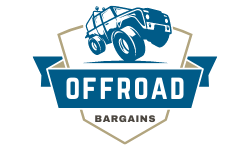
Motorcycle Helmet Safety Certification Guide: An In-Depth Look at DOT, ECE, and Snell Safety Standards – RM Rider Exchange
Nearly every motorcycle helmet has some sort of certification. You see the sticker on the helmet, you glaze over the rating in the product description – it’s a given that your helmet has been tested by somebody else, but how much do you actually know about that testing? Do you know what the requirements are for each of these standards? How often do they update their procedures and practices?
This article is a deep dive into the three most prevalent safety ratings: DOT, ECE, and Snell. Between examining their history, their standards, and their testing regiments, you’ll have a better understanding of just what you’re putting on your head each ride – and why.
History of Motorcycle Helmets
Humans are experiential learners. The first motorcycle was created in 1867, but the first helmet didn’t come for another 50 years. It took a lot of crashes, injuries, and deaths for that first helmet to be developed, and even then, it wasn’t especially effective. In 1914, British physicist Eric Gardner saw the correlation between head injuries and racing, so he developed a leather and hide helmet. The helmet became required for the Isle of Man’s TT races, the thought being that they kept riders’ heads safe from both crashes and the cold. They didn’t help much in the event of a crash, however. Despite this fact, the helmet design remained virtually unchanged until 1935 when army officer and British celebrity T.E. Lawrence, a.k.a. Lawrence of Arabia, died in a motorcycle crash.

An early iteration of the motorcycle helmet in a 1938 race.
Lawrence’s death was the calamitous “straw that broke the camel’s back”. Neuroscientist Sir Hugh Cairns used Lawrence’s passing, and the lesions discovered on his brain, to advocate for more comprehensive head protection. The study on Lawrence led Cairn to the first “real” helmet in 1941, or at least the first helmet resembling the protection we expect as a bare minimum today. In 1953, the United States Air Force patented a modern helmet with a rigid shell and padded interior, and in 1954, an Italian scientist created the first fiber helmet. The wheel of innovation has been spinning ever since, giving us years of development, experimentation, and regulation to create the helmets of today.
History of Safety Standards
Safety standards essentially refer to how a helmet does its job. In the case of DOT, ECE, and Snell, that has to do with the helmet’s ability to absorb impact and protect the rider’s head. Each standard has a different evolution and different way of completing that task.

DOT
The most commonly used and recognized safety standard in the United States is through the Department of Transportation, or DOT. The DOT uses the Federal Motor Vehicle Safety Standard, FMVSS, to specify rules and regulations regarding DOT approved motorcycle helmets.
The first helmet laws with the DOT and FMVSS were enacted in 1966. They establish the minimum performance requirements for each helmet. Testing procedures were laid out in 2011 and minor updates to the rules were made in 2015, though the basic requirements have remained the same since their inception. The requirements are referred to as FMVSS No. 218. The 2015 update to the rules starts with, “The purpose of FMVSS No. 218 is to reduce deaths and injuries to motorcyclists and other motor vehicle users resulting from head impacts.” In 2019, the US reported that 5,014 motorcyclists died due to insufficient gear, so helmet use is clearly as timely an issue today as it back then. The only difference is that riders back then didn’t have the gear while riders today have it and just don’t wear it.

ECE
The Economic Commission for Europe, otherwise known as the ECE, is the most widely accepted rating across the entire world. Much like the DOT, the ECE functions on the minimum requirements for helmet safety. This factors into the standard’s wide acceptance, though also points people to more expensive ECE-rated helmets as higher expense typically correlates with higher quality. That said, the testing standards for ECE-rated helmets are still looked upon as strict, laid out in 122 pages that have remained unchanged since 2002.

Snell
In 1957, William “Pete” Snell died in a race car accident. Family, friends, fans, and colleagues mourned the popular racers passing. Snell had been wearing a helmet at the time of his crash, but it didn’t do enough to protect him from the impact. So, a group of friends banded together with scientists, physicians, and other passionate researches to create the Snell Memorial Foundation, a nonprofit organization dedicated to create a new, high-quality standard of safety for racing helmets.
Snell is the most unique safety standard in the sense that it’s entirely compulsory and extremely stringent. Unlike DOT and ECE, which are required in many countries for on-road use, Snell is voluntary. Manufacturers pay to send their own helmets into Snell, all for their state-of-the-art testing and highly-respected reputation. Every five years, Snell releases a document outlining what their safety standard is, how they believe helmets should be constructed, and how they complete their testing. The Snell 2020 Standard for Protective Headgear, the most recent iteration, begins with:
There are four reasons for you to be interested in this Standard:
- The use of motorcycles and other motorized vehicles imposes risk of death or permanent impairment due to head injury.
- The proper use of protective helmets can minimize the risk of death or permanent impairment.
- The protective capacity of a helmet is difficult to estimate, particularly at the time of purchase or use. Protective capability is currently measured by destructive testing, which is beyond the means of most helmet wearers.
- Snell certification, backed by ongoing destructive testing of samples taken randomly from dealers and distributors, identifies those helmet models providing and maintaining the highest levels of head protection.
The phrase “destructive testing” certainly stands out and foreshadows the intense practices Snell uses to award their certification. Read on to learn about each safety standards’ testing procedures and protocols.

Testing
All three organizations have their own, distinct way of testing, but there are some similarities.
- DOT, ECE, and Snell all test their helmets on a headform, although the headforms differ in size, construction, and criteria.
- DOT, ECE, and Snell all test on anvils, either flat, hemispherical, curve stone, or a combination of the three.
- To earn the DOT, ECE, and Snell safety standard, sensors within the headform must not detect peak acceleration, or energy transferred though the shell and EPS liner to the head, above a set limit.
Let’s take a look at more specific testing parameters for each safety standard.
DOT
The test procedures for the DOT safety standard are underscored in a 2011 Laboratory Test Procedure document. Specified by the FMVSS, the 76-page document includes specifics on how to test helmets, the tools for testing them, the procedure for documenting results, and everything in between. The specific tests that DOT completes are:
- Impact attenuation – measures the acceleration of the test headform during impact, must not exert force above the maximum allowed amount
- Penetration – measures the rigidity of the shell using a striker, must not damage the shell
- Retention system – measures the strength of the retention system, the retention system must not break or fail
DOT tests their helmets in the same four locations, although these locations are subject to two impact tests each.

ECE
All ECE information is included in the 122-page document, and the following tests are outlined, tested in the same four locations of every helmet:
- Impact attenuation – measures the acceleration of the test headform during impact, must not exert force above the maximum allowed amount
- Retention system – measures the strength of the retention system, the retention system must not break or fail
- Crush and abrasion – measures the strength of the shell on impact, must not catch or adds force to the headform when skidding

Snell
Testing for Snell helmets is incredibly extensive. They complete nine separate safety checks designed to be analogous to real life situations and crashes. Snell tests helmets to see how well they protect the brain, and their tests are some of the most advanced in the industry.
- Impact attenuation – measures the acceleration of the test headform during impact, must not exert force above the maximum allowed amount
- Position Stability (Roll-Off) – measures the rotational forces on a helmet, the headform must not come out of the helmet
- Dynamic Retention – measures the strength of the retention system, the retention system must not break or fail
- Chin Bar Rigidity – measures the strength of the chin bar, must withstand a 5 kg weight without surpassing a maximum downward deflection amount
- Shell Penetration – measures the rigidity of the shell using a striker, must not damage the shell
- Faceshield Penetration – measures the strength of the faceshield, the shield must not be penetrated nor may any “bump” inside of the shield exceed a measurement of 2.5 mm
- Flame Resistance – measures the heat resistance of the helmet shell, trim, chin strap, and faceshield, the fire must self-extinguish within a specified amount of time and interior temperature must not exceed 70° centigrade
- Frontal Head Restraint – measures the forward motion of the head in frontal impacts in special racing helmets, must not exceed a specified amount
- Chin Bar Impact – measures the strength of the chin bar in special racing helmets, must not have an impact velocity and acceleration above a certain amount

A common concern with Snell certified helmets, especially considering their complex testing standards, is that the shells are too hard and the liners are too thick. In short, this is a misconception. Snell helmets cannot be harder than what DOT allows, and Snell certified helmets sold in Europe cannot be harder than their ECE approved counterparts. Now, there is some credit to the belief that Snell helmets are heavier. Snell-certified helmets have thicker shells to absorb high-energy impacts, but that heft is arguably synonymous with protection. Rather than just enforcing the parts of the helmet that are going to be tested, Snell helmets are well-rounded in their protective capabilities.
So, Which is Better?
You’ve looked into the background of each safety standard’s history, learned about their specific requirements, and seen how each certified helmet is tested. So, which standard is the best?
Unfortunately, this isn’t something we can tell you. Partly because we don’t know, but mostly because you need to pick the standard that is best for you. DOT, ECE, and Snell certification comes with similar testing that has significant differences. It’s a bit of a conundrum, but you’re now equipped with the knowledge to make an extremely educated decision.

What we can tell you is to make sure your helmet is certified by some organization, and certainly complying with your area’s helmet laws. We also recommend, whatever helmet you buy, making sure your lid fits correctly. Check size guides, read customer reviews, and check out this video on how to measure a helmet and choose the correct fitment.
If you’re ready to dive in and find your next helmet, check out our 2021 MX Helmet Buyer’s Guide and full collection of motocross helmets.
![]()
Tell Us What You Think
Do you have a preferred safety standard? Why? Help fellow riders pick their next helmet by sharing your experiences in the comments below.



